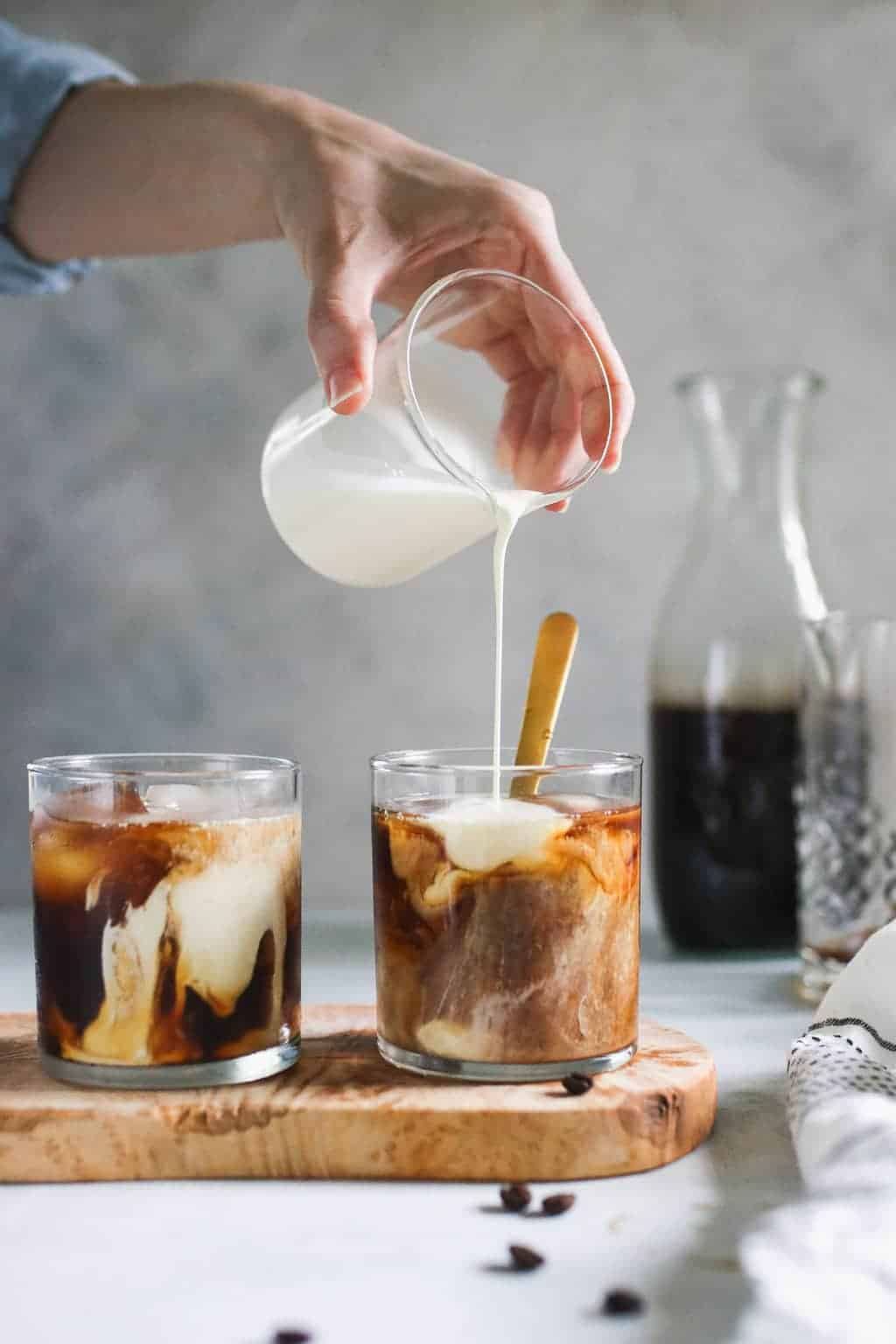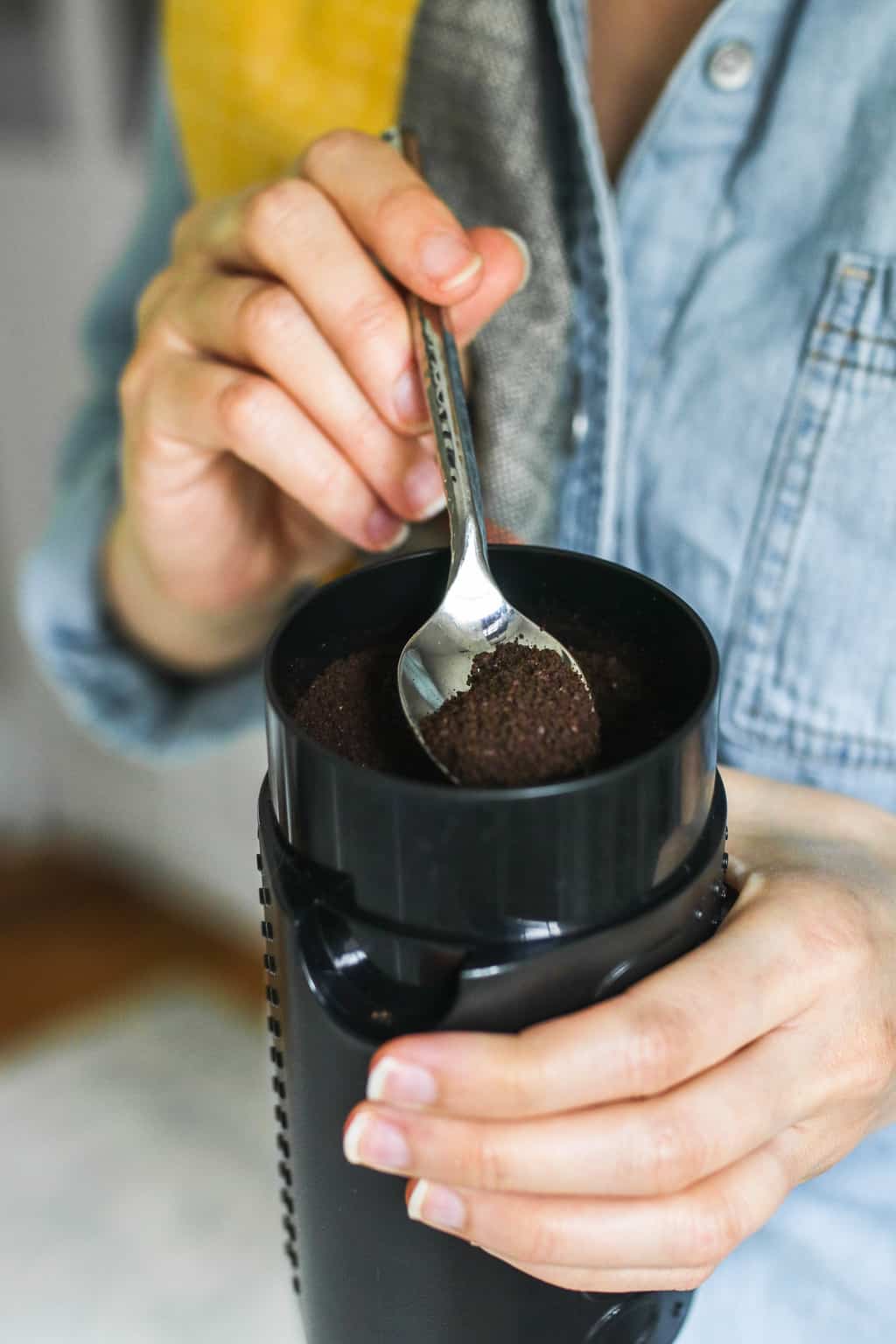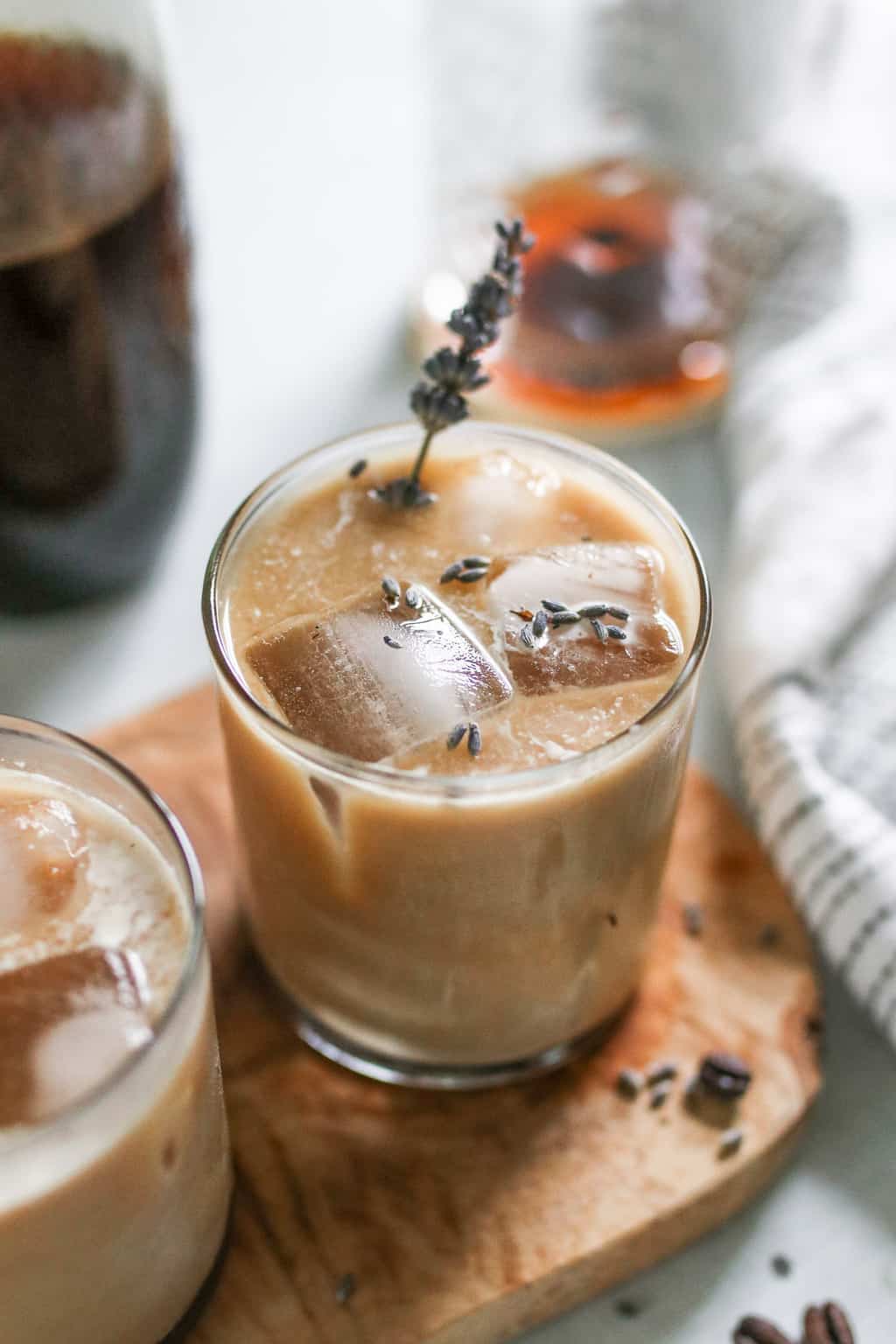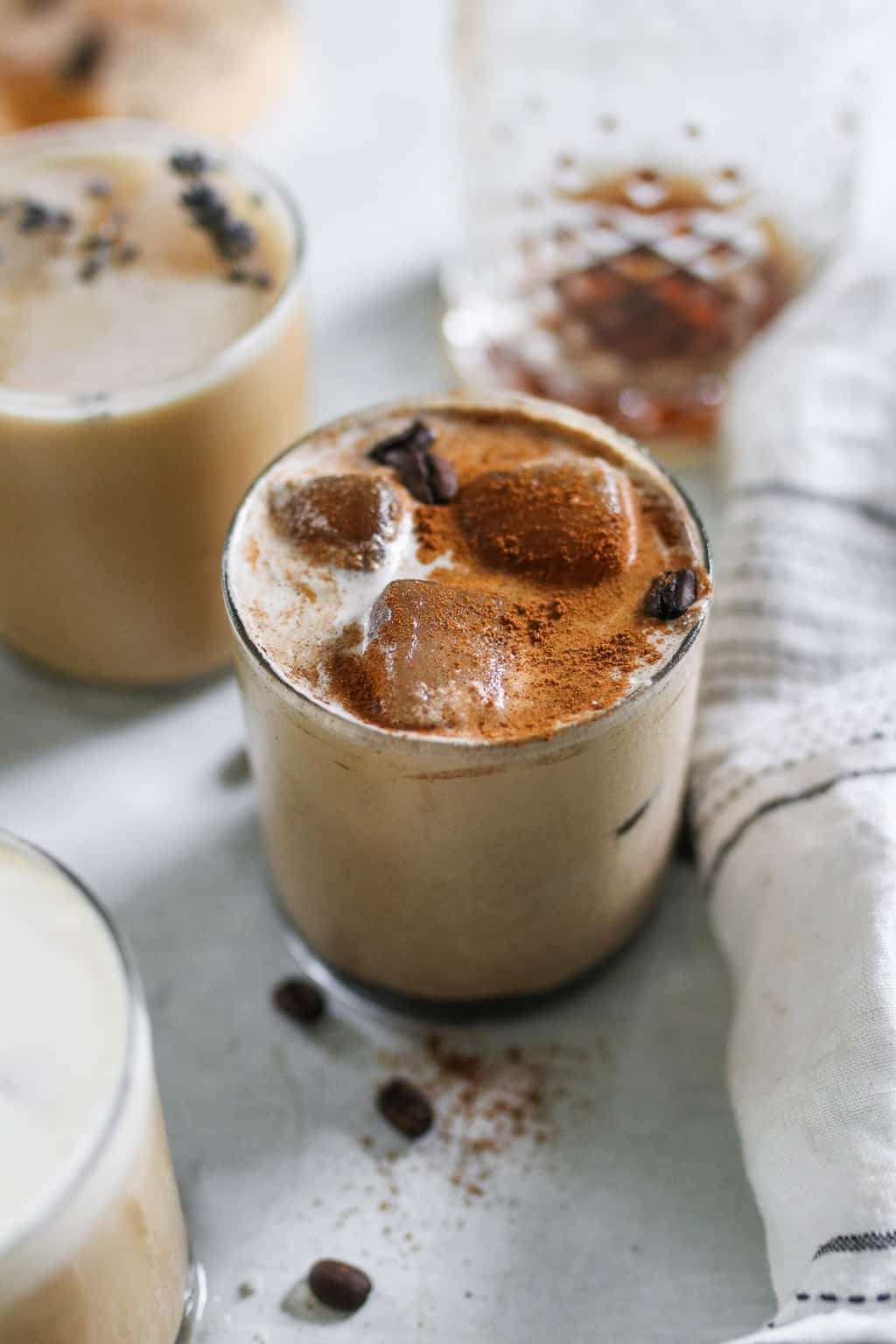My love affair with cold brew coffee started early. I was that kid at college who always kept a pitcher of freshly-steeped iced coffee in her mini fridge and who once considered her 24-ounce travel mug her most prized possession. While my habits have changed over the years (for one, I no longer consider 24 ounces to be a standard “cup” of coffee. woof.) my obsession with cold brew has only grown.
As we head into summer, there’s really no better time to trade in your usual hot cup of joe in favor of a tall glass of cold brew to get you through the hot days ahead. Learning to make cold brew coffee can seem daunting, but it’s really just a matter getting the ratio of beans to water right. From there you just step back and let chemistry do the rest.

Whether you’re a total newbie when it comes to making cold brew coffee or you’d just like to up your cold brew game in time for summer, read on to learn how it’s done.
What is Cold Brew Coffee
“Cold brew” is the process of steeping coffee beans in room temperature water for an extended period of time to extract the flavor from the bean. Unlike traditional coffee, cold brew coffee doesn’t use heat during the steeping process so you end up with a smoother, less bitter brew.
The result?
Cold brew coffee:
-
- Is smooth, flavorful, and highly concentrated
-
- Requires less prep and clean up time
-
- Is less acidic than traditional coffee
-
- Can be poured over ice without watering down the flavor
-
- Contains more caffeine than regular coffee

And because cold brew doesn’t use heat, it breaks down less quickly than traditionally brewed coffee, so you can store it in the refrigerator for up to a week and pour a glass whenever the craving strikes.
How to Make Cold Brew Coffee
The perfect cold brew simply comes down to the right ratio of coffee to water coupled with a long, slow steep time. Although cold brew requires more beans than traditional coffee, it extracts more caffeine and flavor from the beans, leaving you with a highly concentrated coffee that you can dilute with ice, cut with creamer or simply drink straight for a little extra kick.
Here’s what you’ll need to get started:
Supplies
-
- Whole bean coffee (you can also use pre-ground, but the fresher, the better)
-
- Filtered water
-
- Coffee grinder
-
- Glass jar with lid
-
- Cheesecloth
-
- Mesh strainer
The Basic Coffee to Water Ratio
If you’re just getting started, a good rule of thumb is:
1/2 cup coarsely ground coffee for every 1 cup of water
The ratio is flexible and is definitely something you should play around with. If you plan to drink cold brew warm with milk, you might prefer a weaker brew than if you pour it over ice. There’s really no one-size-fits-all way to do it and your ratio will most likely change depending on the brand, flavor and roast you choose.
Personally, I use a ratio of one cup ground coffee to three cups filtered water, and I find that it makes an ideal strength for iced coffee for me. Yours might be totally different.


Top Tips for Making the Perfect Cold Brew
Trial and error plays a large part in getting your cold brew just right, but there are a few things you can do to make the process less painful.

Use the highest quality coffee beans you can find. Cheap coffee will leave you with an acidic, bitter brew no matter what you do. This is my personal favorite, but choose whatever you like.
Start with a dark roast. Cold brew extraction tends to bring out the heavier, richer flavors (like chocolate and nuts) of dark roast coffee. The soft flavor that characterizes light roasts is more difficult to extract through cold brewing and results in more muted flavors.
Grind the beans yourself. Coffee grounds lose their flavor over time. But grinding your own beans right before steeping ensures that they’re as flavorful as possible.
Use filtered water. Cold brew coffee is 98% water so you want to make sure it’s as clean and chemical-free as you can get it. If you don’t have access to filtered water, don’t worry. Just know that it might not taste as great as it could.
Don’t steep for more than 20 hours. Any longer and you run the risk of drawing out some unpleasant woody flavors. If you’re looking for a stronger tasting coffee, just use less water rather than steeping longer.
Store in an airtight container. While cold brew coffee breaks down more slowly than traditional coffee, exposure to air can cut down on its shelf life. I store my cold brew in swing-top glass bottles like these.
Dilute your coffee concentrate. Cold brew is stronger than you’re probably used to. Rather than drinking it straight, cut it with water or milk or pour it over ice when you’re ready to drink it.
Cold Brew Iced Coffee 3 Ways
Now that you have your cold brew ready, here are three tasty ways to dress it up!

Lavender Oat Milk Latte
Oatmilk is a great alternative to nut milk because it’s creamy and smooth, plus it doesn’t overpower your coffee like some other dairy-free creamers out there. Combine it with lavender and honey for a light, refreshing latte you’ll want to sip all summer long.
-
- 1/4 cup water
-
- 1/2 honey
-
- 2 tablespoons lavender (more for garnish)
-
- 1 cup cold brew coffee
-
- 1/3 cup oat milk
-
- 1/2 teaspoon vanilla extract
-
- Ice cubes
Start by making the lavender simple syrup: combine water, honey and lavender in a small saucepan and bring to a light simmer. Swirl the pan a couple times to dissolve the honey, then remove from heat and let sit for an hour, stirring every now and then. Strain the syrup and store in an airtight container.
Place ice cubes in a cup and pour coffee over ice. Add the oatmilk, vanilla extract and 2-3 teaspoons lavender simple syrup. Garnish with extra lavender if desired.

Sea Salt Iced Coffee
You don’t normally think of sea salt and coffee as going hand-in-hand, but let me just tell you, it’ll rock your socks off. In this recipe, iced coffee is mixed with agave, freshly frothed cream and a sprinkle of nutrient-rich seat salt for the healthiest and most decadent cup of joe.
-
- 1 cup cold brew coffee
-
- Agave nectar, rice syrup or honey to taste
-
- Ice cubes
-
- 1/4 cup full fat cream
-
- Pinch sea salt
Place several ice cubes in a glass. Add the coffee and sweetener to taste. Next, combine full fat cream and a pinch of sea salt in a small bowl. Use a wire whisk or a milk frother to whip the cream until it’s slightly frothy (about 20-30 seconds). Pour the cream on top of the coffee and give it a gentle stir.

Maca Cacao Iced Coffee
Maca and cacao help bring out the rich flavors of cold brew while also providing a nutritional boost. If you prefer not to water down your cup with ice, use coffee cubes to give it a chill without diluting the flavor.
-
- 1 cup cold brew coffee
-
- 1/3 cup almond milk
-
- 1 teaspoon cacao powder
-
- 1/2 teaspoon maca powder
-
- 2 teaspoons maple syrup (more to taste)
-
- Coffee cubes (cold brew coffee frozen in an ice cube tray)
Combine everything in a glass and mix well. Garnish with a pinch of cinnamon or ginger for added flavor.
1
Leave a Reply